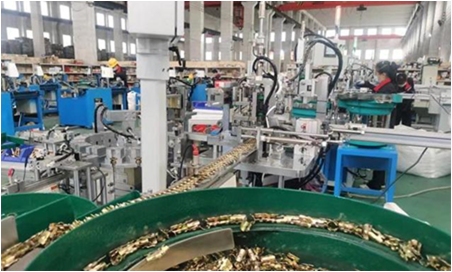Jul . 28, 2024 12:46 Back to list
Durable Marine Grade Stainless Steel Wire Rope Clamps for Secure and Strong Fastening Solutions
Understanding Stainless Steel Wire Rope Clamps Features and Applications
Stainless steel wire rope clamps are essential components in various applications, particularly in industries that require robust and reliable fastening solutions. Whether in construction, marine, or general industrial applications, the need for materials that can withstand environmental stressors while offering reliable performance is critical. This article will delve into the features and applications of stainless steel wire rope clamps, highlighting their importance in today's industrial landscape.
What are Stainless Steel Wire Rope Clamps?
Stainless steel wire rope clamps are devices used to secure wire rope and ensure that it does not slip or come undone under tension. These clamps function by creating a secure loop at the end of a wire rope, allowing it to be attached to various structures or equipment. Made from stainless steel, these clamps possess exceptional resistance to corrosion, heat, and wear, making them ideal for demanding environments.
Features of Stainless Steel Wire Rope Clamps
1. Corrosion Resistance One of the most significant advantages of stainless steel wire rope clamps is their resistance to corrosion. Unlike clamps made from mild steel, which can rust and deteriorate when exposed to moisture and chemicals, stainless steel maintains its integrity over time. This feature is especially vital in marine and outdoor applications.
2. Durability Stainless steel is known for its strength and durability. Wire rope clamps made from this material can withstand high levels of tension and load without deforming or breaking. This durability ensures longevity and reliability, resulting in fewer replacements and reduced overall costs.
3. Versatility These clamps are available in various sizes and designs, making them suitable for multiple applications. Whether securing cables in construction, rigging in marine environments, or for use in outdoor sports equipment, stainless steel wire rope clamps can adapt to meet specific needs.
4. Ease of Installation Installing stainless steel wire rope clamps is straightforward, requiring minimal tools. Users can quickly secure wire rope by recommending a few simple techniques, such as wrapping the wire rope around the clamp and tightening the bolts. This ease of installation saves time and labor costs, making them a preferred choice across industries.
stainless wire rope clamp

5. Safety Safety should always be a priority when working with heavy loads and cables. Stainless steel wire rope clamps provide a secure grip on the wire rope, ensuring that it remains in place under tension. This reliability reduces the risk of accidents and injuries related to equipment failure.
Applications of Stainless Steel Wire Rope Clamps
1. Marine Applications In the marine industry, stainless steel wire rope clamps are often used in rigging, mooring systems, and support lines for sails. Their corrosion resistance makes them ideal for salty and humid environments.
2. Construction Construction projects utilize stainless steel clamps for securing cables and hoisting equipment. The durability and strength of these clamps ensure safety in high-stress environments.
3. Industrial Uses Stainless steel wire rope clamps are commonly used in various industrial settings, such as conveyors, lifts, and general machinery. They help secure cables and ensure smooth operations without interruptions.
4. Outdoor Recreational Equipment Many outdoor sports, such as zip-lining and climbing, require robust cable systems. Stainless steel clamps are commonly used to secure lines, ensuring safety for all participants.
Conclusion
In summary, stainless steel wire rope clamps play a crucial role in ensuring safety and efficiency across various applications. Their corrosion resistance, durability, versatility, ease of installation, and strong safety features make them an indispensable choice for industries ranging from marine to construction. By understanding their features and applications, professionals can make informed decisions when selecting the right clamps for their specific needs, ultimately enhancing the reliability and performance of their projects.


